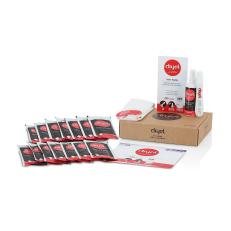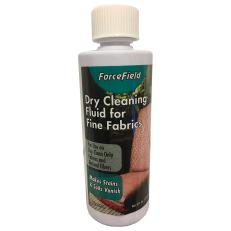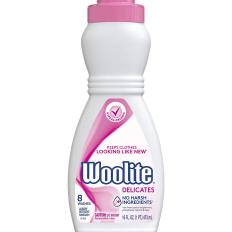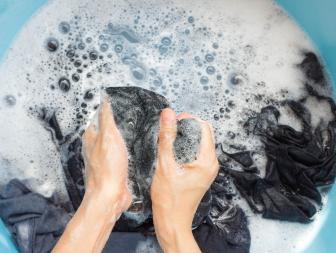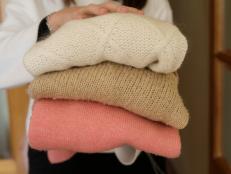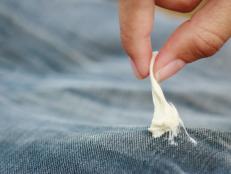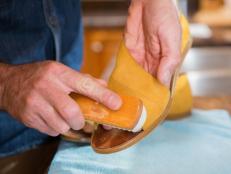How to Dry-Clean at Home
Take matters into your own hands and learn about the techniques and products you can use to dry-clean garments at home.

Clothing manufacturers apply the “dry-clean-only” label conservatively; there are many items that you can safely launder at home if you’re careful and thoughtful about how the item is being handled. At-home dry-cleaning kits are available that simplify the out-of-home dry-cleaning process. These kits allow you to use your own dryer to simulate the same process.
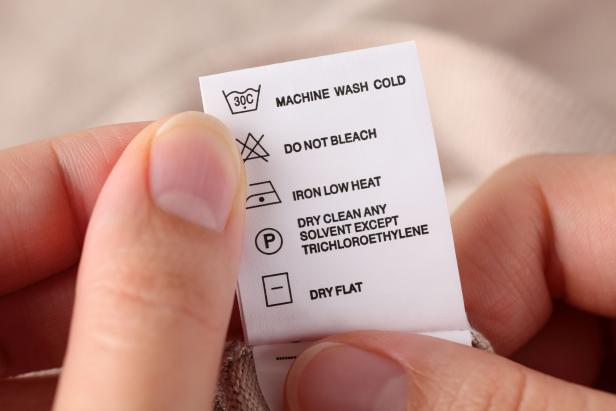
Ekaterina_Minaeva
Review the cleaning instructions on your clothing label.
How Does Dry-Cleaning Work?
Garments that may be damaged by water or agitated too harshly by the machine laundering cycle are often recommended to be dry-cleaned only. Dry cleaners employ a very specific process that treats stains and refreshes fibers without the use of water. However, despite the name, dry-cleaning does make use of a liquid solvent that safely treats stains. It’s not a completely “dry” process!
When you take your items to a dry cleaner, they would typically start by pretreating stains. Then, using a specific dry-cleaning machine, they rotate the garment with solvents such as liquid CO2, perchloroethylene (perc) or hydrocarbon-based fluids. The drum that spins in a dry-cleaning machine operates more slowly and gently than an at-home dryer, ensuring that delicate items are not aggressively handled.
As the drum spins and the solvents interact with the clothing fibers, dirt loosens and is continuously filtered. After treatment, the clothing is tumbled in warm air to remove the remaining solvents and leave the clothing fresh and dry.
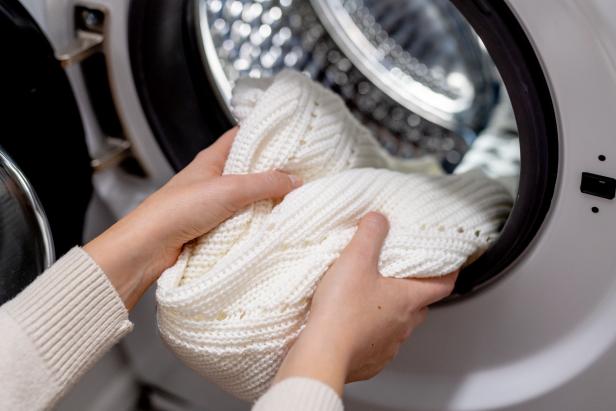
Damian Lugowski
Learn how to clean your clothes at home and skip the trip to the dry-cleaner.
What Fabric Can Safely Be Dry-Cleaned at Home?
Clothing manufacturers typically recommend dry-cleaning on delicate fabrics, garments with intricate or hand-stitched designs, or items that are prone to shrinkage or bleeding when washed at the wrong water temperature. Keep in mind that it is simply a recommendation. Not all items with a dry-cleaning label must be dry-cleaned. Just remember to use caution on these more delicate fibers:
- Silk: Yes, believe it or not, you don’t need to rush every silk item to the dry cleaner. The delicate cycle on your washing machine or hand-washing will safely clean the fibers.
- Leather and Suede: There are many spot-cleaning treatments you can perform at home on leather and suede garments, outerwear, shoes and accessories.
- Wool: A delicate cold water cycle with a detergent formulated for wool allows you to safely clean your sweaters and cozy socks at home. Just remember to air-dry them flat — never put them into the dryer.
- Denim: A cold wash will prevent shrinking, and hand washing is best for preserving the color of your denim.
- Linen: High temperatures can cause items to shrink, but you can launder 100% linen fabric at home using a delicate detergent with lukewarm water on a gentle setting.
- Rayon: Choose cold or low-heat options with rayon garments and accessories because the fabric can easily shrink.
- Fabrics like nylon, acrylic, spandex, cotton, polyester and acetate can all be laundered at home according to a manufacturer's instructions.
Tools and Materials You May Need:
- at-home dry-cleaning kit
- dry-cleaning solvent
- delicate liquid detergent
- delicate stain pretreater
- clean white cloths and towels
- damp towel
- hand steamer
- large bowl
- water
- dryer
- flat drying rack
- hangers
How to Use a Dry-Cleaning Kit
At-home dry-cleaning kits leverage your home’s dryer to enable steam cleaning.
- Pretreat stains. Your at-home kit will come with a stain-removing pen and an odor-remover spray that can be applied to delicate fabrics.
- Place treated clothing and the cleaning cloth in a garment bag. The kit should include a cleaning cloth (which contains a safe dry-cleaning solvent) and a reusable fabric protection bag that can hold several items. Most kits come with multiple cleaning cloths so you can use the same bag over and over again. When you run the cycle, make sure no other items are in the dryer – you’re only treating what you placed in the bag.
- Set the dryer to medium heat and run for 15-30 minutes.
- Remove garments from the dryer at the end of the cycle. Hang them to reduce wrinkling.
Can you use powerful dry-cleaning solvents at home without purchasing a kit?
Yes! You can purchase small volumes of the solvents used by dry cleaners to help spot-clean oil-based stains in delicate fabrics. However, keep in mind that most of these chemicals are very powerful. Protect your skin and lungs and work in a well-ventilated area.
Shop At-Home Dry-Cleaning Products

ReaLiia
Hand-washing delicate items is a safe alternative to the dry-cleaner.
How to Hand-Wash Dry-Clean-Only Garments
If you want to dry-clean at home without a kit, consider washing items by hand as your top alternative. Hand-washing is a great solution for items that only need spot-cleanings, such as your leather or suede items, or a delicate garment that has a small stain but doesn’t need to be fully laundered.
Spot-cleaning doesn’t always require the garment to be fully soaked, but hand-washing in a large bowl is certainly an easy way to delicately clean an entire article of clothing.
- Pretreat the stain. Use your stain remover of choice for the material, or a small amount of delicate liquid detergent diluted in water.
- Submerge the garment in cool water with a teaspoon of liquid detergent. Agitate the garment gently with your hands, paying extra attention to the pretreated stains.
- If you can’t submerge the garment (leather, suede, delicate details), follow the instructions on the cleaner. Some cleaners may ask you to leave the solution directly on the fibers while others may instruct you to blot the stain with a damp cloth until you’ve lifted the residue away from the fibers.
- Rinse in a bowl of clean cool water. This step of the process will help remove any remaining soap from the fibers.
- Extract water from the fabric. Avoid wringing the water out of delicate garments when hand-washing. Instead, gently fold the garment so much of the water drips back into the bowl and then dry laying flat. Lay a large white towel on a flat surface and place the garment on top of it. If you need to gently squeeze the clothing, lay another white towel on top of the garment and roll both towels and the apparel up gently to draw more water out of the fibers.
- Allow the garment to dry flat overnight or longer, until fully dry.
How to Hand-Wash Clothes
Make clothes last longer and target tough stains by hand-washing items such as bras, lingerie, tights, sweaters, baby clothes and more.
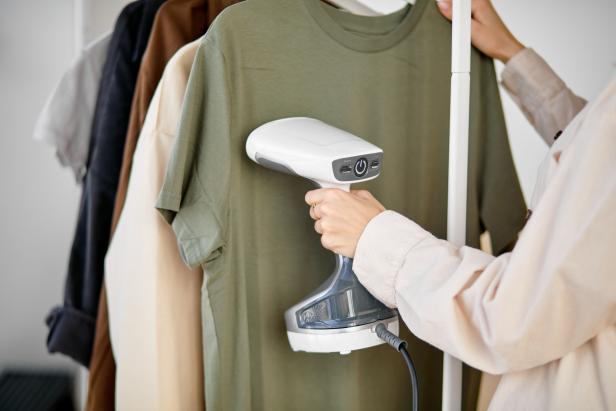
Roman Chazov
Steam cleaning clothing to remove wrinkles and odors.
How to Steam Dry-Clean-Only Clothes
Using a hand steamer is a great way to keep your garment fresh between washes, even on delicate fibers like silk and wool. Not only is it a chemical-free way to kill bacteria and remove odors, but it’ll also remove creases and wrinkles in fibers.
In fact, if you’re taking items to the dry cleaner simply to remove wrinkles, using a hand steamer at home can do just as good as a job (and more delicately than ironing).
That said, avoid using steam on sequins and beads, which can melt, or suedes and leathers, which can hold onto watermarks.
- Place the garment on a hanger and preheat the steamer.
- Start by steaming the lining of the garment. This mostly applies to dresses, suits, jackets and other formal wear.
- Run the steamer top to bottom over the fibers. Move the steamer consistently to avoid concentrating the steam in one area.
- Allow the garment to hang until cool. The steamer can also leave some moisture in the fibers, so allow it to completely air-dry before storing the item away in your closet.
The Best Clothing Steamers of 2023, Tested by HGTV Editors
Quickly and efficiently get rid of pesky wrinkles in your clothes — without lugging out the ironing board — with one of these editor-tested and -approved steamers.
Can I Use the Washing Machine for Dry-Clean-Only Items?
If you need more agitation that you can provide by hand-washing, use your washer to get the job done. Many dry-clean-only fabrics can withstand a delicate wash, but keep the following tips in mind:
- Set the appliance to the most gentle/delicate setting available.
- Use cool or warm water — never hot.
- Use a small amount of liquid detergent formulated for delicate garments.
- Place the garment in a delicates' bag for added protection against agitation.
- Dry items flat or place on a hanger after washing.
10 Ways to Better Clean Your Clothes and Make Fabrics Last Longer 10 Photos
Try these simple, cost-effective tricks for getting your clothes cleaner.






